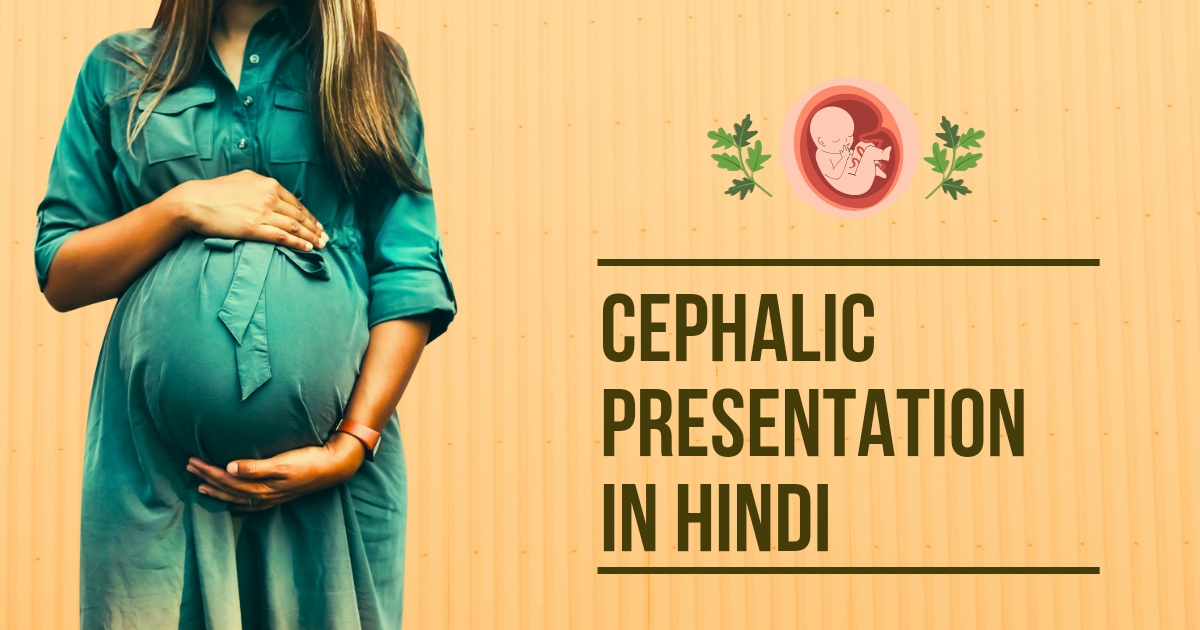

Cephalic presentation in hindi – सेफेलिक प्रेजेंटेशन क्या है
Cephalic presentation in hindi : सेफेलिक प्रस्तुति का मतलब होता है जब गर्भवती महिला का अल्ट्रासाउंड होता है तो उस समय बच्चे के मस्तक की स्तिथि कैसी है।
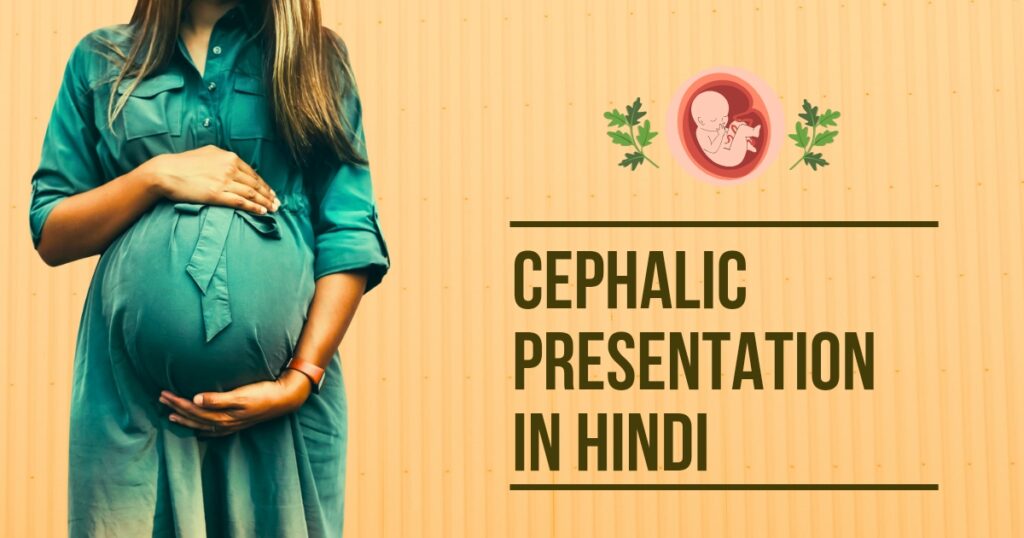
जब बच्चे का सिर नीचे की तरफ होता है उसे हम हेड डाउन पोजिशन भी कहते हैं तो उस स्थिति को सबसे श्रेष्ठ स्थिति माना जाता है नॉर्मल डिलीवरी के लिए। वैसे तो नॉर्मल डिलीवरी दूसरी स्थितियों में भी हो जाती है लेकिन लगभग 95% जो नॉर्मल डिलीवरी होती है वह सारी सेफेलिक पोजीशन ( Cephalic presentation ) में ही होती है। इसीलिए सेफेलिक पोजिशन सबसे बेस्ट पोजीशन मानी जाती है नॉर्मल डिलीवरी के लिए।
Table of Contents
सेफेलिक प्रेजेंटेशन बनती कैसे है – how is cephalic presentation formed.
गर्भावस्था के समय बच्चों की ज्यादातर पोजीशन सेफेलिक होती है। स्थिति में शिशु के मस्तक की स्थिति नीचे की ओर आ जाती है और ऐसा इसलिए होता है क्योंकि बच्चे का सर भारी होता है और गुरुत्वाकर्षण बल के कारण वह नीचे की ओर आ जाता है। जब डिलीवरी का समय आता है जब बच्चा पूरी तरह से बन जाता है तब बच्चे के सिर का वजन भारी हो जाता है जिसकी वजह से वह नीचे की ओर आ जाता है।
किन स्तिथियों में सेफेलिक प्रेजेंटेशन नही बनती
- जुडवा बच्चों के समय पर – जब भी किसी गर्भवती महिला को जुड़वा बच्चे होने वाले होते हैं उस समय बच्चा पेट के अंदर सही तरह से घूम नहीं पता है और सेफेलिक पोजिशन की स्थिति में नहीं आ पाता है।
- उच्च एमनियोटिक द्रव ( high amniotic fluid ) – गर्भावस्था के समय बच्चे का एमनियोटिक तरल पदार्थ इतना ज्यादा हो जाता है जिसकी वजह से पेट के अंदर बच्चा घूम नहीं पता है और वह सेफेलिक पोजिशन की स्थिति में नहीं आ पाता है।
- एक से अधिक डिलीवरी – जब भी किसी महिला की प्रेगनेंसी एक या दो बार हो चुकी है या गर्भधारण होकर खराब हो गया है और अब वह दोबारा से प्रेग्नेंट हुई है तो बार बार प्रेग्नेंट होने की वजह से भी सेफेलिक पोजीशन ( Cephalic position) आने में दिक्कत आती है। बार-बार प्रेग्नेंट होने से मांसपेशियां ढीली हो जाती है जिसकी वजह से सेफेलिक पोजिशन ( Cephalic presentation) बनने में दिक्कत आती है।
शिशु का सिर नीचे की ओर होने पर डिलीवरी कितने दिन बाद होती है?
ज्यादातर गर्भवती महिलाओं के जो बच्चे होते हैं वह आठवें महीने के अंत तक या नवे महीने के शुरुआत में सेफेलिक पोजीशन में आ जाते हैं। इसका मतलब यह है कि 33 वे सप्ताह से लेकर 38 वें सप्ताह तक बच्चा अपना सिर नीचे की ओर कर लेता है जिसकी वजह से नॉर्मल डिलीवरी आसानी से हो जाती है और जिसे सेफेलिक पोजीशन भी कहा जाता है।
लेकिन कुछ बच्चों की स्थिति ऐसी भी होती है जो इस समय तक भी अपना सिर नीचे नहीं कर पाते हैं फिर यह होता है कि जब 38 वा सप्ताह भी बीत जाता है तब बहुत कम मौके होते हैं कि बच्चा अब अपना सिर नीचे की ओर कर पाएगा। तो इस स्थिति में फिर डॉक्टर ऑपरेशन करके डिलीवरी करते हैं जिसे सिजेरियन डिलीवरी भी कहा जाता है।
जैसे ही बच्चे का सिर नीचे की ओर आता है वैसे ही बच्चेदानी के मुंह पर दबाव पढ़ना शुरू हो जाता है जिसकी वजह से म्यूकस प्लग बाहर निकलने लगता है। म्यूकस प्लग एक घाड़ा डिस्चार्ज होता है जो पूरे 9 महीने तक बच्चों को बाहरी कीटाणुओं से बचा के रखता है। जैसे ही बच्चों का सिर नीचे की तरफ होता है वैसे ही म्यूकस प्लग महिलाओं के प्राइवेट पार्ट से बाहर निकलने लगता है।
जब म्यूकस प्लग थोड़ा-थोड़ा करके गर्भवती महिलाओं के प्राइवेट पार्ट से बाहर निकलने लगता है उसे समय बच्चेदानी का मुंह भी थोड़ा-थोड़ा खुलने लगता है। जैसे ही बच्चा धीरे-धीरे करके नीचे की ओर खिसकता है या प्राइवेट पार्ट में रास्ता बनाता है बाहर आने के लिए फिर गर्भवती महिलाओं को दर्द महसूस होता है और नॉर्मल डिलीवरी हो जाती है। इस प्रक्रिया में सामान्य 15 से 20 दोनों का समय लग जाता।
जब बच्चा अपना सिर नीचे की ओर कर लेता है उसके बाद 15 से 20 दिनों के अंदर नॉर्मल डिलीवरी हो जाती है। ज्यादातर महिलाओं की डिलीवरी 15 से 20 दिनों के अंदर हो ही जाती है। जब नवे महीने में अल्ट्रासाउंड होता है तब अगर बच्चे का सिर नीचे की ओर होता है तो अल्ट्रासाउंड रिपोर्ट में सेफेलिक पोजीशन लिखा हुआ आता है जिसका मतलब होता है नॉर्मल डिलीवरी होने वाली है।
इस ब्लॉग पोस्ट में अपने सेफेलिक प्रेजेंटेशन के बारे में जानकारी प्राप्त की अगर किसी का कोई भी सवाल या सुझाव है सेफेलिक प्रेजेंटेशन को लेकर तो कमेंट बॉक्स में जरूर बता सकते हैं।
Abhi Sandhu is a pharmacology expert with a passion for sharing accurate and accessible information about medicine. Abhi Sandhu is committed to educating readers about the latest developments in healthcare and helping them make informed decisions about their health.
Leave a comment Cancel reply
Save my name, email, and website in this browser for the next time I comment.
Fetal Presentation, Position, and Lie (Including Breech Presentation)
- Variations in Fetal Position and Presentation |
During pregnancy, the fetus can be positioned in many different ways inside the mother's uterus. The fetus may be head up or down or facing the mother's back or front. At first, the fetus can move around easily or shift position as the mother moves. Toward the end of the pregnancy the fetus is larger, has less room to move, and stays in one position. How the fetus is positioned has an important effect on delivery and, for certain positions, a cesarean delivery is necessary. There are medical terms that describe precisely how the fetus is positioned, and identifying the fetal position helps doctors to anticipate potential difficulties during labor and delivery.
Presentation refers to the part of the fetus’s body that leads the way out through the birth canal (called the presenting part). Usually, the head leads the way, but sometimes the buttocks (breech presentation), shoulder, or face leads the way.
Position refers to whether the fetus is facing backward (occiput anterior) or forward (occiput posterior). The occiput is a bone at the back of the baby's head. Therefore, facing backward is called occiput anterior (facing the mother’s back and facing down when the mother lies on her back). Facing forward is called occiput posterior (facing toward the mother's pubic bone and facing up when the mother lies on her back).
Lie refers to the angle of the fetus in relation to the mother and the uterus. Up-and-down (with the baby's spine parallel to mother's spine, called longitudinal) is normal, but sometimes the lie is sideways (transverse) or at an angle (oblique).
For these aspects of fetal positioning, the combination that is the most common, safest, and easiest for the mother to deliver is the following:
Head first (called vertex or cephalic presentation)
Facing backward (occiput anterior position)
Spine parallel to mother's spine (longitudinal lie)
Neck bent forward with chin tucked
Arms folded across the chest
If the fetus is in a different position, lie, or presentation, labor may be more difficult, and a normal vaginal delivery may not be possible.
Variations in fetal presentation, position, or lie may occur when
The fetus is too large for the mother's pelvis (fetopelvic disproportion).
The uterus is abnormally shaped or contains growths such as fibroids .
The fetus has a birth defect .
There is more than one fetus (multiple gestation).

Position and Presentation of the Fetus
Variations in fetal position and presentation.
Some variations in position and presentation that make delivery difficult occur frequently.
Occiput posterior position
In occiput posterior position (sometimes called sunny-side up), the fetus is head first (vertex presentation) but is facing forward (toward the mother's pubic bone—that is, facing up when the mother lies on her back). This is a very common position that is not abnormal, but it makes delivery more difficult than when the fetus is in the occiput anterior position (facing toward the mother's spine—that is facing down when the mother lies on her back).
When a fetus faces up, the neck is often straightened rather than bent,which requires more room for the head to pass through the birth canal. Delivery assisted by a vacuum device or forceps or cesarean delivery may be necessary.
Breech presentation
In breech presentation, the baby's buttocks or sometimes the feet are positioned to deliver first (before the head).
When delivered vaginally, babies that present buttocks first are more at risk of injury or even death than those that present head first.
The reason for the risks to babies in breech presentation is that the baby's hips and buttocks are not as wide as the head. Therefore, when the hips and buttocks pass through the cervix first, the passageway may not be wide enough for the head to pass through. In addition, when the head follows the buttocks, the neck may be bent slightly backwards. The neck being bent backward increases the width required for delivery as compared to when the head is angled forward with the chin tucked, which is the position that is easiest for delivery. Thus, the baby’s body may be delivered and then the head may get caught and not be able to pass through the birth canal. When the baby’s head is caught, this puts pressure on the umbilical cord in the birth canal, so that very little oxygen can reach the baby. Brain damage due to lack of oxygen is more common among breech babies than among those presenting head first.
In a first delivery, these problems may occur more frequently because a woman’s tissues have not been stretched by previous deliveries. Because of risk of injury or even death to the baby, cesarean delivery is preferred when the fetus is in breech presentation, unless the doctor is very experienced with and skilled at delivering breech babies or there is not an adequate facility or equipment to safely perform a cesarean delivery.
Breech presentation is more likely to occur in the following circumstances:
Labor starts too soon (preterm labor).
The uterus is abnormally shaped or contains abnormal growths such as fibroids .
Other presentations
In face presentation, the baby's neck arches back so that the face presents first rather than the top of the head.
In brow presentation, the neck is moderately arched so that the brow presents first.
Usually, fetuses do not stay in a face or brow presentation. These presentations often change to a vertex (top of the head) presentation before or during labor. If they do not, a cesarean delivery is usually recommended.
In transverse lie, the fetus lies horizontally across the birth canal and presents shoulder first. A cesarean delivery is done, unless the fetus is the second in a set of twins. In such a case, the fetus may be turned to be delivered through the vagina.

- Cookie Preferences

Copyright © 2024 Merck & Co., Inc., Rahway, NJ, USA and its affiliates. All rights reserved.
Appointments at Mayo Clinic
- Pregnancy week by week
- Fetal presentation before birth
The way a baby is positioned in the uterus just before birth can have a big effect on labor and delivery. This positioning is called fetal presentation.
Babies twist, stretch and tumble quite a bit during pregnancy. Before labor starts, however, they usually come to rest in a way that allows them to be delivered through the birth canal headfirst. This position is called cephalic presentation. But there are other ways a baby may settle just before labor begins.
Following are some of the possible ways a baby may be positioned at the end of pregnancy.
Head down, face down
When a baby is head down, face down, the medical term for it is the cephalic occiput anterior position. This the most common position for a baby to be born in. With the face down and turned slightly to the side, the smallest part of the baby's head leads the way through the birth canal. It is the easiest way for a baby to be born.

Head down, face up
When a baby is head down, face up, the medical term for it is the cephalic occiput posterior position. In this position, it might be harder for a baby's head to go under the pubic bone during delivery. That can make labor take longer.
Most babies who begin labor in this position eventually turn to be face down. If that doesn't happen, and the second stage of labor is taking a long time, a member of the health care team may reach through the vagina to help the baby turn. This is called manual rotation.
In some cases, a baby can be born in the head-down, face-up position. Use of forceps or a vacuum device to help with delivery is more common when a baby is in this position than in the head-down, face-down position. In some cases, a C-section delivery may be needed.

Frank breech
When a baby's feet or buttocks are in place to come out first during birth, it's called a breech presentation. This happens in about 3% to 4% of babies close to the time of birth. The baby shown below is in a frank breech presentation. That's when the knees aren't bent, and the feet are close to the baby's head. This is the most common type of breech presentation.
If you are more than 36 weeks into your pregnancy and your baby is in a frank breech presentation, your health care professional may try to move the baby into a head-down position. This is done using a procedure called external cephalic version. It involves one or two members of the health care team putting pressure on your belly with their hands to get the baby to roll into a head-down position.
If the procedure isn't successful, or if the baby moves back into a breech position, talk with a member of your health care team about the choices you have for delivery. Most babies in a frank breech position are born by planned C-section.

Complete and incomplete breech
A complete breech presentation, as shown below, is when the baby has both knees bent and both legs pulled close to the body. In an incomplete breech, one or both of the legs are not pulled close to the body, and one or both of the feet or knees are below the baby's buttocks. If a baby is in either of these positions, you might feel kicking in the lower part of your belly.
If you are more than 36 weeks into your pregnancy and your baby is in a complete or incomplete breech presentation, your health care professional may try to move the baby into a head-down position. This is done using a procedure called external cephalic version. It involves one or two members of the health care team putting pressure on your belly with their hands to get the baby to roll into a head-down position.
If the procedure isn't successful, or if the baby moves back into a breech position, talk with a member of your health care team about the choices you have for delivery. Many babies in a complete or incomplete breech position are born by planned C-section.

When a baby is sideways — lying horizontal across the uterus, rather than vertical — it's called a transverse lie. In this position, the baby's back might be:
- Down, with the back facing the birth canal.
- Sideways, with one shoulder pointing toward the birth canal.
- Up, with the hands and feet facing the birth canal.
Although many babies are sideways early in pregnancy, few stay this way when labor begins.
If your baby is in a transverse lie during week 37 of your pregnancy, your health care professional may try to move the baby into a head-down position. This is done using a procedure called external cephalic version. External cephalic version involves one or two members of your health care team putting pressure on your belly with their hands to get the baby to roll into a head-down position.
If the procedure isn't successful, or if the baby moves back into a transverse lie, talk with a member of your health care team about the choices you have for delivery. Many babies who are in a transverse lie are born by C-section.

If you're pregnant with twins and only the twin that's lower in the uterus is head down, as shown below, your health care provider may first deliver that baby vaginally.
Then, in some cases, your health care team may suggest delivering the second twin in the breech position. Or they may try to move the second twin into a head-down position. This is done using a procedure called external cephalic version. External cephalic version involves one or two members of the health care team putting pressure on your belly with their hands to get the baby to roll into a head-down position.
Your health care team may suggest delivery by C-section for the second twin if:
- An attempt to deliver the baby in the breech position is not successful.
- You do not want to try to have the baby delivered vaginally in the breech position.
- An attempt to move the baby into a head-down position is not successful.
- You do not want to try to move the baby to a head-down position.
In some cases, your health care team may advise that you have both twins delivered by C-section. That might happen if the lower twin is not head down, the second twin has low or high birth weight as compared to the first twin, or if preterm labor starts.

- Landon MB, et al., eds. Normal labor and delivery. In: Gabbe's Obstetrics: Normal and Problem Pregnancies. 8th ed. Elsevier; 2021. https://www.clinicalkey.com. Accessed May 19, 2023.
- Holcroft Argani C, et al. Occiput posterior position. https://www.updtodate.com/contents/search. Accessed May 19, 2023.
- Frequently asked questions: If your baby is breech. American College of Obstetricians and Gynecologists https://www.acog.org/womens-health/faqs/if-your-baby-is-breech. Accessed May 22, 2023.
- Hofmeyr GJ. Overview of breech presentation. https://www.updtodate.com/contents/search. Accessed May 22, 2023.
- Strauss RA, et al. Transverse fetal lie. https://www.updtodate.com/contents/search. Accessed May 22, 2023.
- Chasen ST, et al. Twin pregnancy: Labor and delivery. https://www.updtodate.com/contents/search. Accessed May 22, 2023.
- Cohen R, et al. Is vaginal delivery of a breech second twin safe? A comparison between delivery of vertex and non-vertex second twins. The Journal of Maternal-Fetal & Neonatal Medicine. 2021; doi:10.1080/14767058.2021.2005569.
- Marnach ML (expert opinion). Mayo Clinic. May 31, 2023.
Products and Services
- A Book: Obstetricks
- A Book: Mayo Clinic Guide to a Healthy Pregnancy
- 3rd trimester pregnancy
- Fetal development: The 3rd trimester
- Overdue pregnancy
- Pregnancy due date calculator
- Prenatal care: 3rd trimester
Mayo Clinic does not endorse companies or products. Advertising revenue supports our not-for-profit mission.
- Opportunities
Mayo Clinic Press
Check out these best-sellers and special offers on books and newsletters from Mayo Clinic Press .
- Mayo Clinic on Incontinence - Mayo Clinic Press Mayo Clinic on Incontinence
- The Essential Diabetes Book - Mayo Clinic Press The Essential Diabetes Book
- Mayo Clinic on Hearing and Balance - Mayo Clinic Press Mayo Clinic on Hearing and Balance
- FREE Mayo Clinic Diet Assessment - Mayo Clinic Press FREE Mayo Clinic Diet Assessment
- Mayo Clinic Health Letter - FREE book - Mayo Clinic Press Mayo Clinic Health Letter - FREE book
- Healthy Lifestyle
Your gift holds great power – donate today!
Make your tax-deductible gift and be a part of the cutting-edge research and care that's changing medicine.
- Getting Pregnant
- Registry Builder
- Baby Products
- Birth Clubs
- See all in Community
- Ovulation Calculator
- How To Get Pregnant
- How To Get Pregnant Fast
- Ovulation Discharge
- Implantation Bleeding
- Ovulation Symptoms
- Pregnancy Symptoms
- Am I Pregnant?
- Pregnancy Tests
- See all in Getting Pregnant
- Due Date Calculator
- Pregnancy Week by Week
- Pregnant Sex
- Weight Gain Tracker
- Signs of Labor
- Morning Sickness
- COVID Vaccine and Pregnancy
- Fetal Weight Chart
- Fetal Development
- Pregnancy Discharge
- Find Out Baby Gender
- Chinese Gender Predictor
- See all in Pregnancy
- Baby Name Generator
- Top Baby Names 2023
- Top Baby Names 2024
- How to Pick a Baby Name
- Most Popular Baby Names
- Baby Names by Letter
- Gender Neutral Names
- Unique Boy Names
- Unique Girl Names
- Top baby names by year
- See all in Baby Names
- Baby Development
- Baby Feeding Guide
- Newborn Sleep
- When Babies Roll Over
- First-Year Baby Costs Calculator
- Postpartum Health
- Baby Poop Chart
- See all in Baby
- Average Weight & Height
- Autism Signs
- Child Growth Chart
- Night Terrors
- Moving from Crib to Bed
- Toddler Feeding Guide
- Potty Training
- Bathing and Grooming
- See all in Toddler
- Height Predictor
- Potty Training: Boys
- Potty training: Girls
- How Much Sleep? (Ages 3+)
- Ready for Preschool?
- Thumb-Sucking
- Gross Motor Skills
- Napping (Ages 2 to 3)
- See all in Child
- Photos: Rashes & Skin Conditions
- Symptom Checker
- Vaccine Scheduler
- Reducing a Fever
- Acetaminophen Dosage Chart
- Constipation in Babies
- Ear Infection Symptoms
- Head Lice 101
- See all in Health
- Second Pregnancy
- Daycare Costs
- Family Finance
- Stay-At-Home Parents
- Breastfeeding Positions
- See all in Family
- Baby Sleep Training
- Preparing For Baby
- My Custom Checklist
- My Registries
- Take the Quiz
- Best Baby Products
- Best Breast Pump
- Best Convertible Car Seat
- Best Infant Car Seat
- Best Baby Bottle
- Best Baby Monitor
- Best Stroller
- Best Diapers
- Best Baby Carrier
- Best Diaper Bag
- Best Highchair
- See all in Baby Products
- Why Pregnant Belly Feels Tight
- Early Signs of Twins
- Teas During Pregnancy
- Baby Head Circumference Chart
- How Many Months Pregnant Am I
- What is a Rainbow Baby
- Braxton Hicks Contractions
- HCG Levels By Week
- When to Take a Pregnancy Test
- Am I Pregnant
- Why is Poop Green
- Can Pregnant Women Eat Shrimp
- Insemination
- UTI During Pregnancy
- Vitamin D Drops
- Best Baby Forumla
- Postpartum Depression
- Low Progesterone During Pregnancy
- Baby Shower
- Baby Shower Games
Breech, posterior, transverse lie: What position is my baby in?

Fetal presentation, or how your baby is situated in your womb at birth, is determined by the body part that's positioned to come out first, and it can affect the way you deliver. At the time of delivery, 97 percent of babies are head-down (cephalic presentation). But there are several other possibilities, including feet or bottom first (breech) as well as sideways (transverse lie) and diagonal (oblique lie).
Fetal presentation and position
During the last trimester of your pregnancy, your provider will check your baby's presentation by feeling your belly to locate the head, bottom, and back. If it's unclear, your provider may do an ultrasound or an internal exam to feel what part of the baby is in your pelvis.
Fetal position refers to whether the baby is facing your spine (anterior position) or facing your belly (posterior position). Fetal position can change often: Your baby may be face up at the beginning of labor and face down at delivery.
Here are the many possibilities for fetal presentation and position in the womb.
Medical illustrations by Jonathan Dimes
Head down, facing down (anterior position)
A baby who is head down and facing your spine is in the anterior position. This is the most common fetal presentation and the easiest position for a vaginal delivery.
This position is also known as "occiput anterior" because the back of your baby's skull (occipital bone) is in the front (anterior) of your pelvis.
Head down, facing up (posterior position)
In the posterior position , your baby is head down and facing your belly. You may also hear it called "sunny-side up" because babies who stay in this position are born facing up. But many babies who are facing up during labor rotate to the easier face down (anterior) position before birth.
Posterior position is formally known as "occiput posterior" because the back of your baby's skull (occipital bone) is in the back (posterior) of your pelvis.
Frank breech
In the frank breech presentation, both the baby's legs are extended so that the feet are up near the face. This is the most common type of breech presentation. Breech babies are difficult to deliver vaginally, so most arrive by c-section .
Some providers will attempt to turn your baby manually to the head down position by applying pressure to your belly. This is called an external cephalic version , and it has a 58 percent success rate for turning breech babies. For more information, see our article on breech birth .
Complete breech
A complete breech is when your baby is bottom down with hips and knees bent in a tuck or cross-legged position. If your baby is in a complete breech, you may feel kicking in your lower abdomen.
Incomplete breech
In an incomplete breech, one of the baby's knees is bent so that the foot is tucked next to the bottom with the other leg extended, positioning that foot closer to the face.
Single footling breech
In the single footling breech presentation, one of the baby's feet is pointed toward your cervix.
Double footling breech
In the double footling breech presentation, both of the baby's feet are pointed toward your cervix.
Transverse lie
In a transverse lie, the baby is lying horizontally in your uterus and may be facing up toward your head or down toward your feet. Babies settle this way less than 1 percent of the time, but it happens more commonly if you're carrying multiples or deliver before your due date.
If your baby stays in a transverse lie until the end of your pregnancy, it can be dangerous for delivery. Your provider will likely schedule a c-section or attempt an external cephalic version , which is highly successful for turning babies in this position.
Oblique lie
In rare cases, your baby may lie diagonally in your uterus, with his rump facing the side of your body at an angle.
Like the transverse lie, this position is more common earlier in pregnancy, and it's likely your provider will intervene if your baby is still in the oblique lie at the end of your third trimester.
Was this article helpful?
What to know if your baby is breech

What's a sunny-side up baby?

What happens to your baby right after birth

How your twins’ fetal positions affect labor and delivery

BabyCenter's editorial team is committed to providing the most helpful and trustworthy pregnancy and parenting information in the world. When creating and updating content, we rely on credible sources: respected health organizations, professional groups of doctors and other experts, and published studies in peer-reviewed journals. We believe you should always know the source of the information you're seeing. Learn more about our editorial and medical review policies .
Ahmad A et al. 2014. Association of fetal position at onset of labor and mode of delivery: A prospective cohort study. Ultrasound in obstetrics & gynecology 43(2):176-182. https://www.ncbi.nlm.nih.gov/pubmed/23929533 Opens a new window [Accessed September 2021]
Gray CJ and Shanahan MM. 2019. Breech presentation. StatPearls. https://www.ncbi.nlm.nih.gov/books/NBK448063/ Opens a new window [Accessed September 2021]
Hankins GD. 1990. Transverse lie. American Journal of Perinatology 7(1):66-70. https://www.ncbi.nlm.nih.gov/pubmed/2131781 Opens a new window [Accessed September 2021]
Medline Plus. 2020. Your baby in the birth canal. U.S. National Library of Medicine. https://medlineplus.gov/ency/article/002060.htm Opens a new window [Accessed September 2021]

Where to go next

- How To Get Pregnant
- Infertility
- Pregnancy Week by Week
- Second Pregnancy
- Giving Birth
- Post Pregnancy
- Breastfeeding
- Development
- Browse Names
- Play & Activities
- Coloring Pages
- Food & Nutrition
- Health & Fitness
- Style & Beauty Care
- Collaborations
- New Parents
- Single Parenting
- Relationships
- Baby Eye Color Calculator
- Online Pregnancy Test
- Chinese Gender Predictor
- Implantation Calculator
- hCG Calculator
- Period Calculator
- ovulation calculator
- pregnancy due date calculator
- Child Height Predictor
- Pregnancy Weight Gain Calculator
- Breast Milk Calculator
- Child Growth Percentile Calculator
- Baby Cost Calculator
- BMI Calculator For Kids & Teens
- Contraction Calculator
- Immunization Scheduler and Chart
- C-Section Checklist
- Online Twin Pregnancy Quiz
- Numerology calculator
- Child Blood Type Calculator
- Nakshatra Calculator
- Diaper Bag Checklist
- Baby Name Combiner
Home • हिंदी • गर्भावस्था
MomJunction believes in providing reliable, research-backed information to you. As per our strong editorial policy requirements, we base our health articles on references (citations) taken from authority sites, international journals, and research studies. However, if you find any incongruencies, feel free to write to us .
क्या नॉर्मल डिलीवरी के लिए वर्टेक्स पोजीशन अच्छी है? | Vertex Position Of Baby In Hindi

विनिता पंगेनी ने एचएनबी गढ़वाल विश्वविद्यालय से मास कॉम्युनिकेशन में मास्टर डिग्री हासिल की है। इन्होंने सबसे पहले एक कॉपी राइटर, उसके बाद पत्रकार, फिर संपादक के रूप में विभन्न मीडिया कंपनियों में कार... read full bio

Shutterstock
गर्भावस्था के दौरान, खासकर जिन्होंने पहली बार गर्भधारण किया हो उन्हें सबसे बड़ी चिंता इस बात की सताती है कि उनकी नॉर्मल डिलीवरी होगी या सिजेरियन। यह पूरी तरह से गर्भवती के स्वास्थ्य और गर्भ में पल रहे बच्चे की पोजीशन पर निर्भर करता है। गर्भ में बच्चे की पोजीशन अलग-अलग होती हैं, जिसमें वर्टेक्स भी एक है। मॉमजंक्शन के इस लेख में हम बच्चे की वर्टेक्स पोजीशन के बारे में विस्तार से बात करेंगे। इस लेख में हम जानेंगे कि वर्टेक्स पोजीशन क्या है, इसमें डिलीवरी कैसे होती है और इसके क्या जोखिम हो सकते हैं। इन सभी सवालों के जवाब जानने के लिए लेख को अंत तक पढ़ें।
चलिए सबसे पहले समझते हैं कि बच्चे की वर्टेक्स पोजीशन क्या होती है।
वर्टेक्स पोजीशन (शीर्ष स्थिति) क्या है?
जैसा कि हम सभी जानते हैं कि गर्भ में भ्रूण की वृद्धि होने के साथ–साथ बच्चा अपनी पोजीशन बदलता रहता है। वहीं, जब बच्चे का सिर महिला की योनी के नीचे की ओर घूम जाता है, तो इसे वर्टेक्स पोजीशन यानी शीर्ष स्थिति कहते हैं। अक्सर डिलीवरी के कुछ हफ्तों पहले लगभग 34 हफ्ते तक बच्चा सिर-नीचे की स्थिति में आ जाता है। इस पोजीशन को हेड डाउन और सेफेलिक पोजीशन (Cephalic Position) के नाम से भी जाना जाता है। नॉर्मल डिलीवरी के लिए ये पोजीशन सबसे अच्छी मानी जाती है। इससे प्रसव के दौरान मां और बच्चे दोनों को कम परेशानियों का सामना करना पड़ सकता है (1) (2) । लेख में आगे वर्टेक्स पोजीशन कितनी तरह की होती है, इसके बारे में बता रहे हैं।
वर्टेक्स पोजीशन (सिर नीचे की ओर) के प्रकार – Types of Vertex Position
वर्टेक्स पोजीशन दो तरह की होती हैं, जो इस प्रकार हैं (1) :
1. ऑकीपुट इंटीरियर (Occiput anterior) : इसमें बच्चे का सिर नीचे की तरफ और चेहरा व शरीर मां की पीठ की तरफ होता है। डिलीवरी के लिए इस पोजीशन को सबसे बेहतर माना जाता है।
2. ऑकीपुट पोस्टीरियर (Occiput Posterior) : इसमें भी बच्चे का सिर नीचे की तरफ होता है, लेकिन चेहरा मां की पीठ की जगह पेट की तरफ होता है। आमतौर पर डिलीवरी के लिए इस अवस्था को भी सुरक्षित माना जाता है, लेकिन इसमें बच्चे के लिए पेल्विस से निकलना थोड़ा मुश्किल हो सकता है। कई बार बच्चा लेबर के दौरान खुद इस पोजीशन से घूम कर ऑकीपुट इंटीरियर पोजीशन में आ जाता है।
यदि डिलीवरी के दौरान बच्चा इस अवस्था में होता है, तो उसे मुड़ने के लिए प्रोत्साहित करने के लिए गर्भवती महिलाओं को टहलने यानी वॉक करने के लिए कहा जाता है। इसके अलावा, डिलीवरी की अलग-अलग पोजीशन ट्राई की जा सकती है। वहीं, जरूरत पड़ने पर वैक्यूम डिवाइस की मदद से बच्चे को बाहर निकाला जा सकता है।
लेख के इस भाग में जानते हैं कि गर्भवती महिला में वर्टेक्स पोजीशन कितनी आम है।
क्या शीर्ष स्थिति सामान्य है?
जैसा कि लेख में ऊपर बताया गया है कि डिलीवरी के दौरान बेबी का सिर नीचे की ओर यानी सिर के बल वाली अवस्था (वर्टेक्स पोजीशन) में होना सबसे अच्छा माना जाता है। गर्भावस्था में 34 हफ्ते के बाद ज्यादातर शिशु सिर के बल नीचे वाली स्थिति में आ जाते हैं। लगभग 97 फीसदी बच्चे डिलीवरी से पहले हेड डाउन अवस्था में आ जाते हैं। बाकी के 3 प्रतिशत बच्चे ब्रीच पोजीशन (पेट में बच्चा उल्टा) में हो सकते हैं, जिससे प्रसव के दौरान कई जटिलताएं हो सकती हैं (3) । अब जानें शिशु के वर्टेक्स पोजीशन का कैसे पता लगा सकते हैं।
क्या मेरा शिशु वर्टेक्स पोजीशन में है? | Shishu Ke Vertex Position me Hone Ke Lakshan
बच्चा किस पोजिशन में है, गर्भवती महिलाएं खुद इसका पता नहीं लगा सकती हैं। बच्चे की पोजिशन से जुड़े कोई लक्षण नहीं होते हैं। निम्नलिखित तरीकों से इसका पता लगाया जा सकता है :
1. एब्डोमिनल पल्पेशन (abdominal palpation) : गर्भावस्था के दौरान बच्चे की पोजीशन जानने के लिए डॉक्टर पेट को छूकर जांच कर सकते हैं। बच्चे की स्थिति जानने का यह सबसे आसान तरीका है। इस तकनीक को लियोपोल्ड मन्यूवर्स कहते हैं (4) ।
2. अल्ट्रासाउंड स्कैन : प्रसव का समय पास आने पर डॉक्टर गर्भ में बच्चे की पोजीशन की पुष्टि के लिए अल्ट्रासाउंड स्कैन की सलाह दे सकते हैं (5) ।
आगे विस्तार से जानिए वर्टेक्स पोजीशन में प्रसव के बारे में।
शीर्ष स्थिति में बच्चे की डिलीवरी कैसे होती है?
नॉर्मल डिलीवरी के लिए बच्चे की वर्टेक्स पोजीशन (हेड डाउन) को सबसे अच्छा माना जाता है। जैसा कि लेख में बताया गया है कि यह भी दो प्रकार की होती है। भ्रूण का ऑकीपुट इंटीरियर पोजीशन (सिर नीचे और शरीर मां की पीठ की तरफ) में होना नॉर्मल है। गर्भवती महिला की नॉर्मल डिलीवरी की शुरुआत में भले ही बच्चा ऑकीपुट इंटीरियर पोजीशन में हो, लेकिन कई बार पेल्विस में आगे बढ़ते हुए वह ऑकीपुट पोस्टीरियर (सिर नीचे और चेहरा मां की पीठ की तरफ) की स्थिति में आ सकता। इसमें कोई परेशानी वाली बात नहीं है। 5 प्रतिशत मामलों में अचानक बच्चा घूम कर अपनी पोजीशन बदल सकता है (6) ।
- सबसे पहले शिशु पेल्विस की तरफ आगे बढ़ता है और धीरे-धीरे इतनी जगह बनाता है कि उसमें से निकलकर जननमार्ग (बर्थ कैनाल-birth canal) से गुजर सके। बर्थ कैनाल छोटा होने की वजह से बच्चा अपने सिर को भी काफी इधर–उधर घुमाता है।
- इसके बाद भ्रूण की ग्रेविटी और एमनियोटिक द्रव सिर को घुमाते हुए शिशु को नीचे की तरफ जाने के लिए प्रेरित करते हैं। यही कारण है कि बच्चे के जन्म के दौरान सबसे पहले उसका सिर मां की योनी से बाहर निकलता है।
- इसके बाद प्रसव का दूसरा चरण शुरू होता है। इस दौरान गर्भाशय ग्रीवा (cervical dilatation) पूरी तरह से खुल जाती है और शिशु का सिर नीचे आ जाता है। इस दौरान शिशु ऑकीपुट पोस्टीरियर में है, तो उसे सिर की मदद से आराम से घुमाकर ऑकीपुट इंटीरियर पोजीशन में लाया जा सकता है।
- इसके बाद बच्चे के बाकी शरीर को बाहर निकाला जाता है।
बच्चे के जन्म की यह प्रक्रिया देखी जाए, तो काफी दिलचस्प है, क्योंकि सोचने वाली बात यह है कि बच्चे को कैसे पता की उसे प्रसव के दौरान अपना शरीर और सिर कहां और किधर से निकालना है। वर्टेक्स यानी शीर्ष पोजीशन में बच्चे का जन्म जल्दी हो जाता है, क्योंकि इसमें बच्चे का सिर दबाव डालता है, जिससे वह संकरे मार्ग को भी चौड़ा कर खुद-ब-खुद बाहर निकल आता है (7) । इसलिए, वर्टेक्स पोजीशन को नॉर्मल डिलीवरी के लिए सबसे बेहतर माना जाता है।
लेख में आगे शिशु की वर्टेक्स पोजीशन के जोखिम के बारे में बता रहे हैं।
क्या बच्चे के लिए शीर्ष (वर्टेक्स) स्थिति में कोई जोखिम है?
हर प्रेगनेंसी और डिलीवरी अलग-अलग होती है। इसलिए, कई बार बच्चे की वर्टेक्स पोजीशन होने के बावजूद प्रसव के दौरान समस्याएं आ सकती हैं, जिनके बारे में नीचे जानकारी दे रहे हैं (8) :
1. कमजोर संकुचन : कई बार संकुचन कमजोर हो सकता है, जिस वजह से गर्भाशय ग्रीवा समय पर पूरी तरह से खुल नहीं पाता है। ऐसे में शिशु बर्थ कैनाल से नहीं निकल पाता है। यदि लेबर की प्रक्रिया ठीक से आगे नहीं बढ़ती है, तो डॉक्टर संकुचन के लिए दवा दे सकते हैं या सिजेरियन डिलीवरी कर सकते हैं।
2. पेरिनियल टियर्स : डिलीवरी के समय योनि और आसपास के ऊतक पर अधिक दबाव पड़ता है, जिससे कभी-कभी वह हिस्सा फट जाता है। कई बार यह टियर अपने आप ठीक हो जाते हैं। यदि टियरिंग गंभीर है, तो परिस्थिति को देखते हुए एपीसीओटोमी (योनि और गुदा के बीच एक सर्जिकल कट) का सहारा लेना पड़ सकता है।
3. गर्भनाल संबंधित समस्या : बर्थ कैनाल से निकलते समय गर्भनाल शिशु के हाथ या पैर में फंस सकती है, लेकिन कई बार गर्भनाल शिशु के गले में लिपट जाती है, जिससे बच्चे के लिए जोखिम की स्थिति बन सकती है।
4. बच्चे की असामान्य हृदय गति : ज्यादातर लेबर के दौरान शिशु की हृदय गति का असामान्य होना कोई परेशानी वाली बात नहीं है। ऐसे में मां को पोजीशन बदलने के लिए कहा जा सकता है, जिससे शिशु का ब्लड फ्लो अच्छे से हो सके। कुछ मामलों में यह परेशानी गंभीर रूप ले सकती है, जिस वजह से तुरंत डिलीवरी करनी पड़ सकती है।
5. पानी की थैली का जल्दी फट जाना : आमतौर पर प्रसव की प्रक्रिया पानी की थैली के फटने के 24 घंटे के अंदर खुद शुरू हो जाती है। यदि ऐसा नहीं होता है, तो डॉक्टर लेबर को प्रेरित करने के लिए दवा दे सकते हैं।
6. पेरिनेटल एस्फेक्सिया : जब भ्रूण को गर्भाशय में या शिशु को प्रसव के दौरान पर्याप्त ऑक्सीजन नहीं मिलती है, तो पेरिनेटल एस्फेक्सिया की परेशानी हो सकती है।
7. शोल्डर डिस्टोकिया : यह परेशानी तब होती है जब प्रसव के दौरान योनी से बच्चे का सिर निकल आता है, लेकिन कोई एक कंधा फंस जाता है।
8. अत्यधिक रक्तस्राव : यदि डिलीवरी के दौरान गर्भाशय में टियर्स ज्यादा आ जाते हैं या प्लेसेंटा गर्भाशय को ढक लेती है, तो रक्तस्राव की स्थिति उत्पन्न हो सकती है।
चलिए, अब जानते हैं कि बच्चे को वर्टेक्स पोजीशन में कैसे लाया जा सकता है।
बच्चे को वर्टेक्स पोजीशन में कैसे लाएं?
नीचे बताए गए तरीकों से बच्चे को वर्टेक्स पोजीशन में लाने में मदद हो सकती है :
- एक्सरसाइज : बच्चे को वर्टेक्स पोजीशन में लाने के लिए डॉक्टर कई एक्सरसाइज की सलाह दे सकते हैं। हालांकि, ये एक्सरसाइज बच्चे को सिर के बल आने में मदद कर सकती हैं, लेकिन इसका मतलब नहीं है कि यू यह पूर्णतः कारगर है। इस विषय में संबंधित डॉक्टर से जरूर बात करें।
- एक्सटर्नल सेफेलिक वर्जन (ईसीवी) : डिलीवरी के कुछ समय पहले तक अगर बच्चा ब्रीच अवस्था (गर्भ में बच्चा उल्टा) है, तो संभव है कि डॉक्टर एक्सटर्नल सेफेलिक वर्जन (ईसीवी-मां के पेट पर हाथों से दबाव देकर भ्रूण की स्थिति को ठीक करने की प्रक्रिया) की मदद से बच्चे को सिर के बल लाने का प्रयास कर सकते हैं। ऐसा नॉर्मल डिलीवरी की संभावना बढ़ाने के लिए किया जाता है (9) ।
लेख के अंतिम भाग में जानिए क्या प्रसव के दौरान भी बच्चा शीर्ष स्थिति में आ सकता है।
क्या डिलीवरी के दौरान बच्चा वर्टेक्स पोजीशन से मुड़ सकता है?
डिलीवरी से पहले शिशु गर्भ में अपनी स्थिति बदलता रहता है, लेकिन प्रसव के शुरू होने के बाद यदि शिशु वर्टेक्स पोजीशन में है, तो अमूमन मामलों में वो इसी अवस्था में योनि से बाहर आता है। कुछ दुर्लभ मामलों में आखिरी के पलों में बच्चा वर्टेक्स पोजीशन से दूसरी अवस्था में आ सकता है (10) ।
1. Delivery presentations By Medlineplus 2. Your baby in the birth canal By Medlineplus 3. Labor with Abnormal Presentation and Position By Researchgate 4. Leopold Maneuvers By NCBI 5. Ultrasound By Medlineplus 6. Clinical effectiveness of position management and manual rotation of the fetal position with a U-shaped birth stool for vaginal delivery of a fetus in a persistent occiput posterior position By Sage Journals 7. Labor Stage 2 By Science Direct 8. What are some common complications during labor and delivery? By NIH 9. Effects of external cephalic version for breech presentation at or near term in high-resource settings: A systematic review of randomized and non-randomized studies By European Journal of Midwifery 10. BREECH PRESENTATIONS IN GENERAL PRACTICE . By Medical Journal
Fetal Presentation, Position, and Lie (Including Breech Presentation)
- Key Points |
Abnormal fetal lie or presentation may occur due to fetal size, fetal anomalies, uterine structural abnormalities, multiple gestation, or other factors. Diagnosis is by examination or ultrasonography. Management is with physical maneuvers to reposition the fetus, operative vaginal delivery , or cesarean delivery .
Terms that describe the fetus in relation to the uterus, cervix, and maternal pelvis are
Fetal presentation: Fetal part that overlies the maternal pelvic inlet; vertex (cephalic), face, brow, breech, shoulder, funic (umbilical cord), or compound (more than one part, eg, shoulder and hand)
Fetal position: Relation of the presenting part to an anatomic axis; for transverse presentation, occiput anterior, occiput posterior, occiput transverse
Fetal lie: Relation of the fetus to the long axis of the uterus; longitudinal, oblique, or transverse
Normal fetal lie is longitudinal, normal presentation is vertex, and occiput anterior is the most common position.
Abnormal fetal lie, presentation, or position may occur with
Fetopelvic disproportion (fetus too large for the pelvic inlet)
Fetal congenital anomalies
Uterine structural abnormalities (eg, fibroids, synechiae)
Multiple gestation
Several common types of abnormal lie or presentation are discussed here.

Transverse lie
Fetal position is transverse, with the fetal long axis oblique or perpendicular rather than parallel to the maternal long axis. Transverse lie is often accompanied by shoulder presentation, which requires cesarean delivery.
Breech presentation
There are several types of breech presentation.
Frank breech: The fetal hips are flexed, and the knees extended (pike position).
Complete breech: The fetus seems to be sitting with hips and knees flexed.
Single or double footling presentation: One or both legs are completely extended and present before the buttocks.
Types of breech presentations
Breech presentation makes delivery difficult ,primarily because the presenting part is a poor dilating wedge. Having a poor dilating wedge can lead to incomplete cervical dilation, because the presenting part is narrower than the head that follows. The head, which is the part with the largest diameter, can then be trapped during delivery.
Additionally, the trapped fetal head can compress the umbilical cord if the fetal umbilicus is visible at the introitus, particularly in primiparas whose pelvic tissues have not been dilated by previous deliveries. Umbilical cord compression may cause fetal hypoxemia.

Predisposing factors for breech presentation include
Preterm labor
Uterine abnormalities
Fetal anomalies
If delivery is vaginal, breech presentation may increase risk of
Umbilical cord prolapse
Birth trauma
Perinatal death

Face or brow presentation
In face presentation, the head is hyperextended, and position is designated by the position of the chin (mentum). When the chin is posterior, the head is less likely to rotate and less likely to deliver vaginally, necessitating cesarean delivery.
Brow presentation usually converts spontaneously to vertex or face presentation.
Occiput posterior position
The most common abnormal position is occiput posterior.
The fetal neck is usually somewhat deflexed; thus, a larger diameter of the head must pass through the pelvis.
Progress may arrest in the second phase of labor. Operative vaginal delivery or cesarean delivery is often required.
Position and Presentation of the Fetus
If a fetus is in the occiput posterior position, operative vaginal delivery or cesarean delivery is often required.
In breech presentation, the presenting part is a poor dilating wedge, which can cause the head to be trapped during delivery, often compressing the umbilical cord.
For breech presentation, usually do cesarean delivery at 39 weeks or during labor, but external cephalic version is sometimes successful before labor, usually at 37 or 38 weeks.

- Cookie Preferences

Copyright © 2024 Merck & Co., Inc., Rahway, NJ, USA and its affiliates. All rights reserved.

- Mammary Glands
- Fallopian Tubes
- Supporting Ligaments
- Reproductive System
- Gametogenesis
- Placental Development
- Maternal Adaptations
- Menstrual Cycle
- Antenatal Care
- Small for Gestational Age
- Large for Gestational Age
- RBC Isoimmunisation
- Prematurity
- Prolonged Pregnancy
- Multiple Pregnancy
- Miscarriage
- Recurrent Miscarriage
- Ectopic Pregnancy
- Hyperemesis Gravidarum
- Gestational Trophoblastic Disease
- Breech Presentation
- Abnormal lie, Malpresentation and Malposition
- Oligohydramnios
- Polyhydramnios
- Placenta Praevia
- Placental Abruption
- Pre-Eclampsia
- Gestational Diabetes
- Headaches in Pregnancy
- Haematological
- Obstetric Cholestasis
- Thyroid Disease in Pregnancy
- Epilepsy in Pregnancy
- Induction of Labour
- Operative Vaginal Delivery
- Prelabour Rupture of Membranes
- Caesarean Section
- Shoulder Dystocia
- Cord Prolapse
- Uterine Rupture
- Amniotic Fluid Embolism
- Primary PPH
- Secondary PPH
- Psychiatric Disease
- Postpartum Contraception
- Breastfeeding Problems
- Primary Dysmenorrhoea
- Amenorrhoea and Oligomenorrhoea
- Heavy Menstrual Bleeding
- Endometriosis
- Endometrial Cancer
- Adenomyosis
- Cervical Polyps
- Cervical Ectropion
- Cervical Intraepithelial Neoplasia + Cervical Screening
- Cervical Cancer
- Polycystic Ovary Syndrome (PCOS)
- Ovarian Cysts & Tumours
- Urinary Incontinence
- Genitourinary Prolapses
- Bartholin's Cyst
- Lichen Sclerosus
- Vulval Carcinoma
- Introduction to Infertility
- Female Factor Infertility
- Male Factor Infertility
- Female Genital Mutilation
- Barrier Contraception
- Combined Hormonal
- Progesterone Only Hormonal
- Intrauterine System & Device
- Emergency Contraception
- Pelvic Inflammatory Disease
- Genital Warts
- Genital Herpes
- Trichomonas Vaginalis
- Bacterial Vaginosis
- Vulvovaginal Candidiasis
- Obstetric History
- Gynaecological History
- Sexual History
- Obstetric Examination
- Speculum Examination
- Bimanual Examination
- Amniocentesis
- Chorionic Villus Sampling
- Hysterectomy
- Endometrial Ablation
- Tension-Free Vaginal Tape
- Contraceptive Implant
- Fitting an IUS or IUD
Abnormal Fetal lie, Malpresentation and Malposition
Original Author(s): Anna Mcclune Last updated: 1st December 2018 Revisions: 12
- 1 Definitions
- 2 Risk Factors
- 3.2 Presentation
- 3.3 Position
- 4 Investigations
- 5.1 Abnormal Fetal Lie
- 5.2 Malpresentation
- 5.3 Malposition
The lie, presentation and position of a fetus are important during labour and delivery.
In this article, we will look at the risk factors, examination and management of abnormal fetal lie, malpresentation and malposition.
Definitions
- Longitudinal, transverse or oblique
- Cephalic vertex presentation is the most common and is considered the safest
- Other presentations include breech, shoulder, face and brow
- Usually the fetal head engages in the occipito-anterior position (the fetal occiput facing anteriorly) – this is ideal for birth
- Other positions include occipito-posterior and occipito-transverse.
Note: Breech presentation is the most common malpresentation, and is covered in detail here .
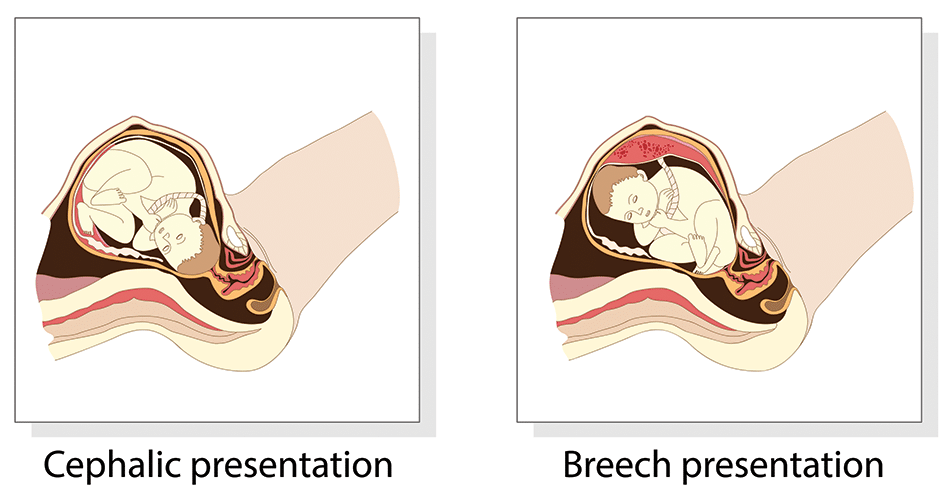
Fig 1 – The two most common fetal presentations: cephalic and breech.
Risk Factors
The risk factors for abnormal fetal lie, malpresentation and malposition include:
- Multiple pregnancy
- Uterine abnormalities (e.g fibroids, partial septate uterus)
- Fetal abnormalities
- Placenta praevia
- Primiparity
Identifying Fetal Lie, Presentation and Position
The fetal lie and presentation can usually be identified via abdominal examination. The fetal position is ascertained by vaginal examination.
For more information on the obstetric examination, see here .
- Face the patient’s head
- Place your hands on either side of the uterus and gently apply pressure; one side will feel fuller and firmer – this is the back, and fetal limbs may feel ‘knobbly’ on the opposite side

Presentation
- Palpate the lower uterus (above the symphysis pubis) with the fingers of both hands; the head feels hard and round (cephalic) and the bottom feels soft and triangular (breech)
- You may be able to gently push the fetal head from side to side
The fetal lie and presentation may not be possible to identify if the mother has a high BMI, if she has not emptied her bladder, if the fetus is small or if there is polyhydramnios .
During labour, vaginal examination is used to assess the position of the fetal head (in a cephalic vertex presentation). The landmarks of the fetal head, including the anterior and posterior fontanelles, indicate the position.

Fig 2 – Assessing fetal lie and presentation.
Investigations
Any suspected abnormal fetal lie or malpresentation should be confirmed by an ultrasound scan . This could also demonstrate predisposing uterine or fetal abnormalities.
Abnormal Fetal Lie
If the fetal lie is abnormal, an external cephalic version (ECV) can be attempted – ideally between 36 and 38 weeks gestation.
ECV is the manipulation of the fetus to a cephalic presentation through the maternal abdomen.
It has an approximate success rate of 50% in primiparous women and 60% in multiparous women. Only 8% of breech presentations will spontaneously revert to cephalic in primiparous women over 36 weeks gestation.
Complications of ECV are rare but include fetal distress , premature rupture of membranes, antepartum haemorrhage (APH) and placental abruption. The risk of an emergency caesarean section (C-section) within 24 hours is around 1 in 200.
ECV is contraindicated in women with a recent APH, ruptured membranes, uterine abnormalities or a previous C-section .
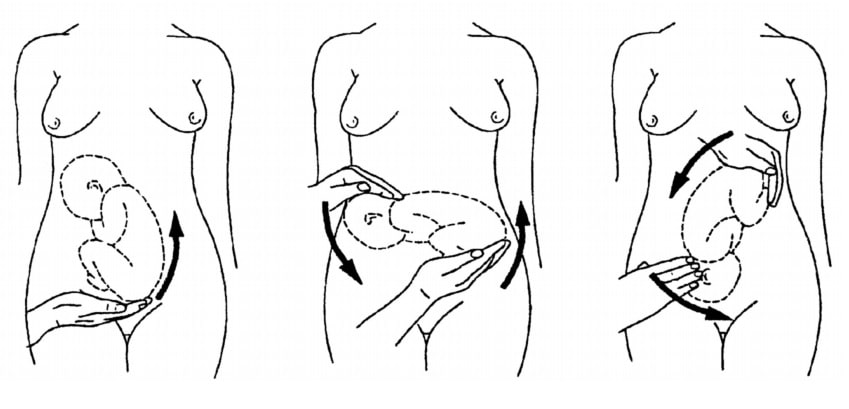
Fig 3 – External cephalic version.
Malpresentation
The management of malpresentation is dependent on the presentation.
- Breech – attempt ECV before labour, vaginal breech delivery or C-section
- Brow – a C-section is necessary
- If the chin is anterior (mento-anterior) a normal labour is possible; however, it is likely to be prolonged and there is an increased risk of a C-section being required
- If the chin is posterior (mento-posterior) then a C-section is necessary
- Shoulder – a C-section is necessary
Malposition
90% of malpositions spontaneously rotate to occipito-anterior as labour progresses. If the fetal head does not rotate, rotation and operative vaginal delivery can be attempted. Alternatively a C-section can be performed.
- Usually the fetal head engages in the occipito-anterior position (the fetal occiput facing anteriorly) - this is ideal for birth
If the fetal lie is abnormal, an external cephalic version (ECV) can be attempted - ideally between 36 and 38 weeks gestation.
- Breech - attempt ECV before labour, vaginal breech delivery or C-section
Found an error? Is our article missing some key information? Make the changes yourself here!
Once you've finished editing, click 'Submit for Review', and your changes will be reviewed by our team before publishing on the site.
We use cookies to improve your experience on our site and to show you relevant advertising. To find out more, read our privacy policy .
Privacy Overview
404 Not found

- Vishal's account
- Prenatal Care
Fetal Cephalic Presentation During Pregnancy

What Is Cephalic Position?
Types of cephalic position, benefits of cephalic presentation, risks of cephalic position, what are some other positions and their associated risks, when does a foetus get into the cephalic position, how do you know if baby is in cephalic position, how to turn a breech baby into cephalic position, natural ways to turn a baby into cephalic position.
If your baby is moving around in the womb, it’s a good sign as it tells you that your baby is developing just fine. A baby starts moving around in the belly at around 14 weeks. And their first movements are usually called ‘ quickening’ or ‘fluttering’.
A baby can settle into many different positions throughout the pregnancy, and it’s alright. But it is only when you have reached your third and final trimester that the position of your baby in your womb will matter the most. The position that your baby takes at the end of the gestation period will most likely be how your baby will make its appearance in the world. Out of all the different positions that your baby can settle into, the cephalic position at 36 weeks is considered the best position. Read on to learn more about fetal cephalic presentation.
When it comes to cephalic presentation meaning, the following can be considered. A baby is in the cephalic position when he is in a head-down position. This is the best position for them to come out in. In case of a ‘cephalic presentation’, the chances of a smooth delivery are higher. This position is where your baby’s head has positioned itself close to the birth canal, and the feet and bottom are up. This is the best position for your baby to be in for safe and healthy delivery.
Your doctor will begin to keep an eye on the position of your baby at around 34 weeks to 36 weeks . The closer you get to your due date, the more important it is that your baby takes the cephalic position. If your baby is not in this position, your doctor will try gentle nudges to get your baby in the right position.
Though it is pretty straightforward, the cephalic position actually has two types, which are explained below:
1. Cephalic Occiput Anterior
Most babies settle in this position. Out of all the babies who settle in the cephalic position, 95% of them will settle this way. This is when a baby is in the head-down position but is facing the mother’s back. This is the preferred position as the baby is able to slide out more easily than in any other position.
2. Cephalic Occiput Posterior
In this position, the baby is in the head-down position but the baby’s face is turned towards the mother’s belly. This type of cephalic presentation is not the best position for delivery as the baby’s head could get stuck owing to its wide position. Almost 5% of the babies in cephalic presentation settle into this position. Babies who come out in this position are said to come out ‘sunny side up’.
Cephalic presentation, where the baby’s head is positioned down towards the birth canal, is the most common and optimal fetal presentation for childbirth. This positioning facilitates a smoother delivery process for both the mother and the baby. Here are several benefits associated with cephalic presentation:
1. Reduced risk of complications
Cephalic presentation decreases the likelihood of complications during labor and delivery , such as umbilical cord prolapse or shoulder dystocia, which can occur with other presentations.
2. Easier vaginal delivery
With the baby’s head positioned first, vaginal delivery is generally easier and less complicated compared to other presentations, resulting in a smoother labor process for the mother.
3. Lower risk of birth injuries
Cephalic presentation reduces the risk of birth injuries to the baby, such as head trauma or brachial plexus injuries, which may occur with other presentations, particularly breech or transverse positions.
4. Faster progression of labor
Babies in cephalic presentation often help to stimulate labor progression more effectively through their positioning, potentially shortening the duration of labor and reducing the need for medical interventions.
5. Better fetal oxygenation
Cephalic presentation typically allows for optimal positioning of the baby’s head, which facilitates adequate blood flow and oxygenation, contributing to the baby’s well-being during labor and delivery.
Factors such as the cephalic posterior position of the baby and a narrow maternal pelvis can increase the likelihood of complications during childbirth. Occasionally, infants in the cephalic presentation may exhibit a backward tilt of their heads, potentially leading to preterm delivery in rare instances.
In addition to cephalic presentation, there are several other fetal positions that can occur during pregnancy and childbirth, each with its own associated risks. These positions can impact the delivery process and may require different management strategies. Here are two common fetal positions and their associated risks:
1. Breech Presentation
- Babies in breech presentation, where the buttocks or feet are positioned to enter the birth canal first, are at higher risk of birth injuries such as hip dysplasia or brachial plexus injuries.
- Breech presentation can lead to complications during labor and delivery, including umbilical cord prolapse, entrapment of the head, or difficulty delivering the shoulders, necessitating interventions such as cesarean section.
2. Transverse Lie Presentation
- Transverse lie , where the baby is positioned sideways across the uterus, often leads to prolonged labor and increases the likelihood of cesarean section due to difficulties in the baby’s descent through the birth canal.
- The transverse position of the baby may result in compression of the umbilical cord during labor, leading to decreased oxygen supply and potential fetal distress. This situation requires careful monitoring and intervention to ensure the baby’s well-being.
When a foetus is moving into the cephalic position, it is known as ‘head engagement’. The baby stars getting into this position in the third trimester, between the 32nd and the 36th weeks, to be precise. When the head engagement begins, the foetus starts moving down into the pelvic canal. At this stage, very little of the baby is felt in the abdomen, but more is felt moving downward into the pelvic canal in preparation for birth.
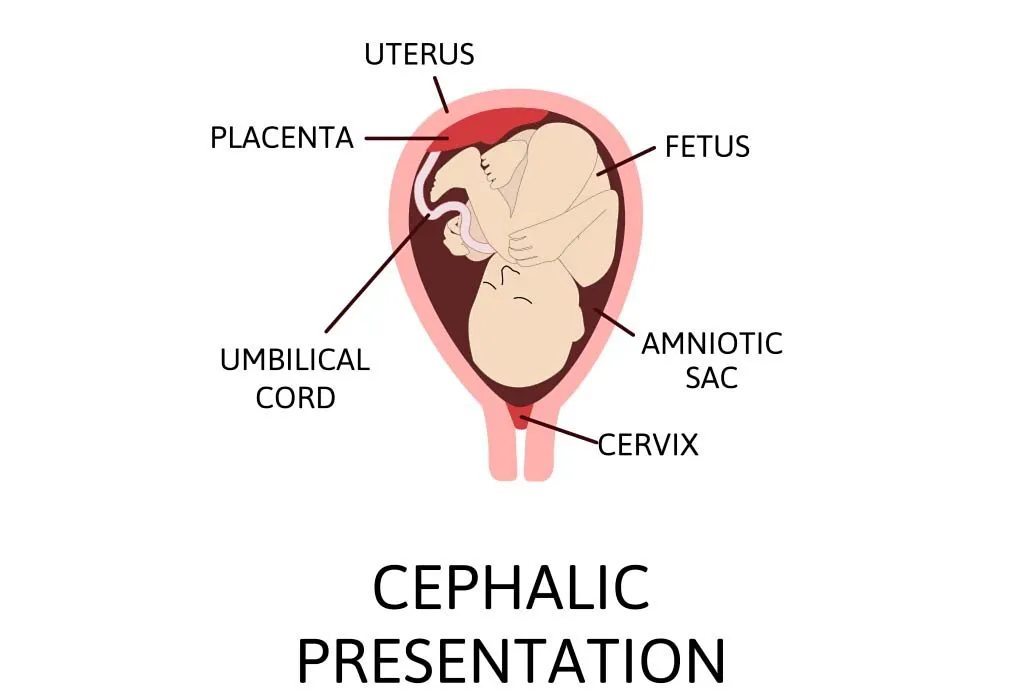
You may think that in order to find out if your baby has a cephalic presentation, an ultrasound is your only option. This is not always the case. You can actually find out the position of your baby just by touching and feeling their movements.
By rubbing your hand on your belly, you might be able to feel their position. If your baby is in the cephalic position, you might feel their kicks in the upper stomach. Whereas, if the baby is in the breech position, you might feel their kicks in the lower stomach.
Even in the cephalic position, it may be possible to tell if your baby is in the anterior position or in the posterior position. When your baby is in the anterior position, they may be facing your back. You may be able to feel your baby move underneath your ribs. It is likely that your belly button will also pop out.
When your baby is in the posterior position, you will usually feel your baby start to kick you in your stomach. When your baby has its back pressed up against your back, your stomach may not look rounded out, but flat instead.
Mothers whose placentas have attached in the front, something known as anterior placenta , you may not be able to feel the movements of your baby as well as you might like to.
Breech babies can make things complicated. Both the mother and the baby will face some problems. A breech baby is positioned head-up and bottom down. In order to deliver the baby, the birth canal needs to open a lot wider than it has to in the cephalic position. Besides this, your baby can get an arm or leg entangled while coming out.
If your baby is in the breech position, there are some things that you can do to encourage the baby to get into the cephalic position. There are a few exercises that could help such as pelvic tilts , swimming , spending a bit of time upside down, and belly dancing are a few ways you can try yourself to get your baby into the head-down position .
If this is not working either, your doctor will try an ECV (External Cephalic Version) . Here, your doctor will be hands-on, applying some gentle, but firm pressure to your tummy. In order to reach a cephalic position, the baby will need to be rolled into a bottom’s up position. This technique is successful around 50% of the time. When this happens, you will be able to have a normal vaginal delivery.
Though it sounds simple enough to get the fetal presentation into cephalic, there are some risks involved with ECV. If your doctor notices your baby’s heart rate starts to become problematic, the doctor will stop the procedure right away.
Encouraging a baby to move into the cephalic position, where the head is down towards the birth canal, is often desirable for smoother labor and delivery. While medical interventions may be necessary in some cases, there are natural methods that pregnant individuals can try to help facilitate this positioning. Here are several techniques that may help turn a baby into the cephalic position:
1. Optimal Maternal Positioning
Maintaining positions such as kneeling, hands and knees, or pelvic tilts may encourage the baby to move into the cephalic position by utilizing gravity and reducing pressure on the pelvis.
2. Spinning Babies Techniques
Specific exercises and positions recommended by the Spinning Babies organization, such as Forward-Leaning Inversion or the Sidelying Release, aim to promote optimal fetal positioning and may help encourage the baby to turn cephalic.
3. Chiropractic Care or Acupuncture
Some individuals find that chiropractic adjustments or acupuncture sessions with qualified practitioners can help address pelvic misalignment or relax tight muscles, potentially creating more space for the baby to maneuver into the cephalic position.
4. Prenatal Yoga and Swimming
Engaging in gentle exercises like prenatal yoga or swimming may help promote relaxation, reduce stress on the uterine ligaments, and encourage the baby to move into the cephalic position naturally. These activities also support overall physical and mental well-being during pregnancy.
1. What factors influence whether my baby will be in cephalic presentation?
Several factors can influence your baby’s position during pregnancy, including the shape and size of your uterus, the strength of your abdominal muscles, the amount of amniotic fluid, and the position of the placenta . Additionally, your baby’s own movements and preferences play a role.
2. Is it necessary for my baby to be in cephalic presentation for a vaginal delivery?
While cephalic presentation is considered the optimal position for vaginal delivery, some babies born in non-cephalic presentations can still be safely delivered vaginally with the guidance of a skilled healthcare provider. However, certain non-cephalic presentations may increase the likelihood of needing a cesarean section.
3. What can I do to encourage my baby to stay in the cephalic presentation?
Maintaining good posture, avoiding positions that encourage the baby to settle into a breech or transverse lie, staying active with gentle exercises, and avoiding excessive reclining can all help encourage your baby to remain in the cephalic presentation. Additionally, discussing any concerns with your healthcare provider and following their recommendations can be beneficial.
This was all about fetus with cephalic presentation. Most babies get into the cephalic position on their own. This is the most ideal situation as there will be little to no complications during normal vaginal labour. There are different cephalic positions, but these should not cause a lot of issues. If your baby is in any position other than cephalic in pregnancy, you may need C-Section . Keep yourself updated on the smallest of progress during your pregnancy so that you are aware of everything that is going on. Go for regular check-ups as your doctor will be able to help you if a complication arises during acephalic presentation at 20, 28 and 30 weeks.
References/Resources:
1. Glezerman. M; Planned vaginal breech delivery: current status and the need to reconsider (Expert Review of Obstetrics & Gynecology); Taylor & Francis Online; https://www.tandfonline.com/doi/full/10.1586/eog.12.2 ; January 2014
2. Feeling your baby move during pregnancy; UT Southwestern Medical Center; https://utswmed.org/medblog/fetal-movements/
3. Fetal presentation before birth; Mayo Clinic; https://www.mayoclinic.org/healthy-lifestyle/pregnancy-week-by-week/in-depth/fetal-positions/art-20546850
4. Fetal Positions; Cleveland Clinic; https://my.clevelandclinic.org/health/articles/9677-fetal-positions-for-birth
5. FAQs: If Your Baby Is Breech; American College of Obstetricians and Gynecologists; https://www.acog.org/womens-health/faqs/if-your-baby-is-breech
6. Roecker. C; Breech repositioning unresponsive to Webster technique: coexistence of oligohydramnios (Journal of Chiropractic Medicine); Science Direct; https://www.sciencedirect.com/science/article/abs/pii/S1556370713000588 ; June 2013
7. Presentation and position of baby through pregnancy and at birth; Pregnancy, Birth & Baby; https://www.pregnancybirthbaby.org.au/presentation-and-position-of-baby-through-pregnancy-and-at-birth
Belly Mapping Pregnancy Belly Growth Chart Baby in Vertex Position during Labour and Delivery
- RELATED ARTICLES
- MORE FROM AUTHOR

Keeping Your Sex Drive Alive in Pregnancy

Is Diarrhoea a Sign of Pregnancy?

Baby Moves or Kicks in the Night During Pregnancy– Is it Safe?
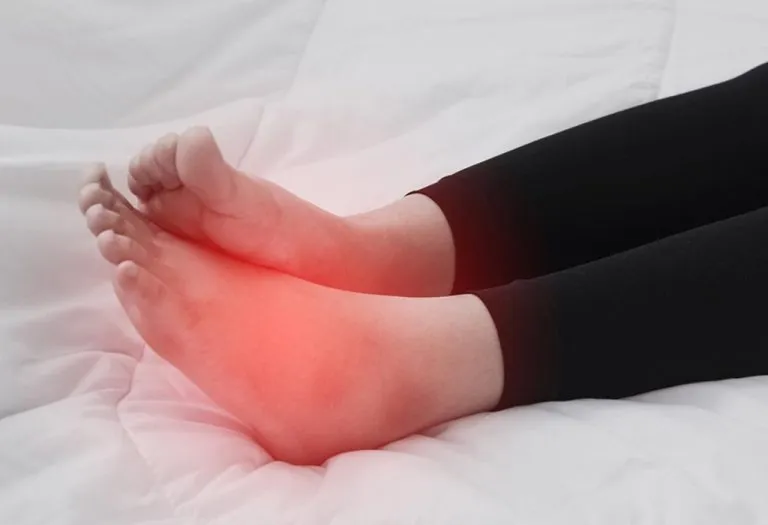
17 Effective Home Remedies for Swollen Feet During Pregnancy

Can You Drink Wine While Pregnant?
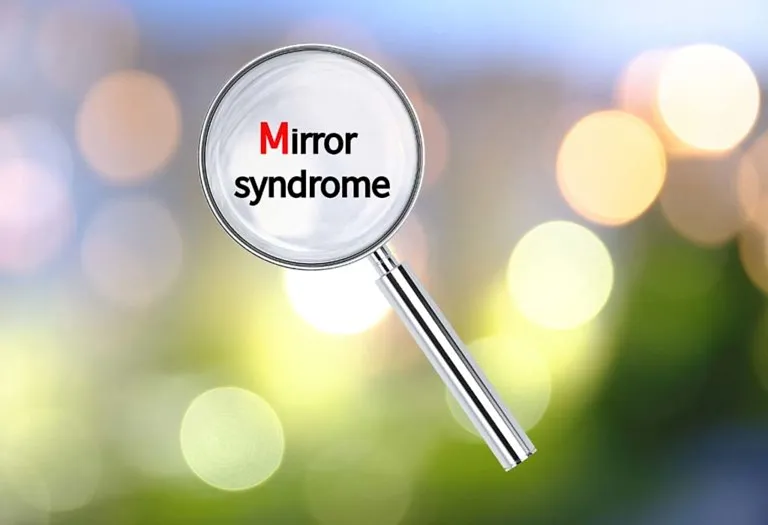
Mirror Syndrome During Pregnancy - Causes, Symptoms, and Treatment
Popular on parenting.

245 Rare Boy & Girl Names with Meanings

Top 22 Short Moral Stories For Kids

170 Boy & Girl Names That Mean 'Gift from God'

800+ Unique & Cute Nicknames for Boys & Girls
Latest posts.

Understanding Baby Food Labels - Easy Guide for Parents on How to Read & Use

5 Ways to Maintain Diaper Hygiene in Summer for a Happy Baby!

4 Baby Sleep-Related Questions All New Parents Have Answered by a Paediatrician!

Do Indian Babies Have Different Diaper Needs? Here's an Expert's Opinion!
We have a new app!
Take the Access library with you wherever you go—easy access to books, videos, images, podcasts, personalized features, and more.
Download the Access App here: iOS and Android . Learn more here!
- Remote Access
- Save figures into PowerPoint
- Download tables as PDFs

Chapter 15: Abnormal Cephalic Presentations
Jessica Dy; Darine El-Chaar
- Download Chapter PDF
Disclaimer: These citations have been automatically generated based on the information we have and it may not be 100% accurate. Please consult the latest official manual style if you have any questions regarding the format accuracy.
Download citation file:
- Search Book
Jump to a Section
Malpresentations.
- TRANSVERSE POSITIONS OF THE OCCIPUT
- POSTERIOR POSITIONS OF THE OCCIPUT
- BROW PRESENTATIONS
- MEDIAN VERTEX PRESENTATIONS: MILITARY ATTITUDE
- FACE PRESENTATION
- SELECTED READING
- Full Chapter
- Supplementary Content
The fetus enters the pelvis in a cephalic presentation approximately 95 percent to 96 percent of the time. In these cephalic presentations, the occiput may be in the persistent transverse or posterior positions. In about 3 percent to 4 percent of pregnancies, there is a breech-presenting fetus (see Chapter 25 ). In the remaining 1 percent, the fetus may be either in a transverse or oblique lie (see Chapter 26 ), or the head may be extended with the face or brow presenting.
Predisposing Factors
Maternal and uterine factors.
Contracted pelvis: This is the most common and important factor
Pendulous maternal abdomen: If the uterus and fetus are allowed to fall forward, there may be difficulty in engagement
Neoplasms: Uterine fibromyomas or ovarian cysts can block the entry to the pelvis
Uterine anomalies: In a bicornuate uterus, the nonpregnant horn may obstruct labor in the pregnant one
Abnormalities of placental size or location: Conditions such as placenta previa are associated with unfavorable positions of the fetus
High parity
Fetal Factors
Errors in fetal polarity, such as breech presentation and transverse lie
Abnormal internal rotation: The occiput rotates posteriorly or fails to rotate at all
Fetal attitude: Extension in place of normal flexion
Multiple pregnancy
Fetal anomalies, including hydrocephaly and anencephaly
Polyhydramnios: An excessive amount of amniotic fluid allows the baby freedom of activity, and he or she may assume abnormal positions
Prematurity
Placenta and Membranes
Placenta previa
Cornual implantation
Premature rupture of membranes
Effects of Malpresentations
Effects on labor.
The less symmetrical adaptation of the presenting part to the cervix and to the pelvis plays a part in reducing the efficiency of labor.
The incidence of fetopelvic disproportion is higher
Inefficient uterine action is common. The contractions tend to be weak and irregular
Prolonged labor is seen frequently
Pathologic retraction rings can develop, and rupture of the lower uterine segment may be the end result
The cervix often dilates slowly and incompletely
The presenting part stays high
Premature rupture of the membranes occurs often
The need for operative delivery is increased
Effects on the Mother
Because greater uterine and intraabdominal muscular effort is required and because labor is often prolonged, maternal exhaustion is common
There is more stretching of the perineum and soft parts, and there are more lacerations
Tears of the uterus, cervix, and vagina
Uterine atony from prolonged labor
Early rupture of the membranes
Excessive blood loss
Tissue damage
Frequent rectal and vaginal examinations
Prolonged labor
Pop-up div Successfully Displayed
This div only appears when the trigger link is hovered over. Otherwise it is hidden from view.
Please Wait

- Hindi to English
- English to Hindi
- Spell Checker
Cephalic मीनिंग : Meaning of Cephalic in Hindi - Definition and Translation

- हिन्दी से अंग्रेजी
- Spell Check
- cephalic Meaning
- Similar words
- Opposite words
- Sentence Usages
CEPHALIC MEANING IN HINDI - EXACT MATCHES

OTHER RELATED WORDS
Definition of cephalic.
- of or relating to the head
RELATED OPPOSITE WORDS (Antonyms):
Information provided about cephalic:.
Cephalic meaning in Hindi : Get meaning and translation of Cephalic in Hindi language with grammar,antonyms,synonyms and sentence usages by ShabdKhoj. Know answer of question : what is meaning of Cephalic in Hindi? Cephalic ka matalab hindi me kya hai (Cephalic का हिंदी में मतलब ). Cephalic meaning in Hindi (हिन्दी मे मीनिंग ) is शीर्ष.English definition of Cephalic : of or relating to the head
Explore ShabdKhoj
ShabdKhoj Type
Advertisements
Meaning summary.
Antonym/Opposite Words : caudal
👇 SHARE MEANING 👇

IMAGES
VIDEO
COMMENTS
Cephalic presentation in hindi. जब बच्चे का सिर नीचे की तरफ होता है उसे हम हेड डाउन पोजिशन भी कहते हैं तो उस स्थिति को सबसे श्रेष्ठ स्थिति माना जाता है ...
This video will explain about the Cephalic Vs Breech presentation. What are the different types of breech. How they detrmime the mode of delivery.#pregnancy ...
About this video:What is Cephalic Position ?What is its significance?Why it is necessary for normal delivery?All your quieres related to this topic are cover...
Social media links - Like on my Facebook page - https://www.facebook.com/N.G.MedicalsFollow on Instagram -https://www.instagram.com/n.g.medicals/ Fetal Prese...
For these aspects of fetal positioning, the combination that is the most common, safest, and easiest for the mother to deliver is the following: Head first (called vertex or cephalic presentation) Facing backward (occiput anterior position) Spine parallel to mother's spine (longitudinal lie) Neck bent forward with chin tucked
Possible fetal positions can include: Occiput or cephalic anterior: This is the best fetal position for childbirth. It means the fetus is head down, facing the birth parent's spine (facing backward). Its chin is tucked towards its chest. The fetus will also be slightly off-center, with the back of its head facing the right or left.
The vertex presentation describes the orientation a fetus should be in for a safe vaginal delivery. It becomes important as you near your due date because it tells your pregnancy care provider how they may need to deliver your baby. Vertex means "crown of the head.". This means that the crown of the fetus's head is presenting towards the ...
Frank breech. When a baby's feet or buttocks are in place to come out first during birth, it's called a breech presentation. This happens in about 3% to 4% of babies close to the time of birth. The baby shown below is in a frank breech presentation. That's when the knees aren't bent, and the feet are close to the baby's head.
A cephalic presentation or head presentation or head-first presentation is a situation at childbirth where the fetus is in a longitudinal lie and the head enters the pelvis first; the most common form of cephalic presentation is the vertex presentation, where the occiput is the leading part (the part that first enters the birth canal). All other presentations are abnormal (malpresentations ...
Fetal presentation, or how your baby is situated in your womb at birth, is determined by the body part that's positioned to come out first, and it can affect the way you deliver. ... 97 percent of babies are head-down (cephalic presentation). But there are several other possibilities, including feet or bottom first (breech) as well as sideways ...
Labor with Abnormal Presentation and Position By Researchgate 4. Leopold Maneuvers By NCBI 5. Ultrasound By Medlineplus 6. Clinical effectiveness of position management and manual rotation of the fetal position with a U-shaped birth stool for vaginal delivery of a fetus in a persistent occiput posterior position By Sage Journals 7.
Benefits of Cephalic Presentation in Pregnancy. Cephalic presentation is one of the most ideal birth positions, and has the following benefits: It is the safest way to give birth as your baby's position is head-down and prevents the risk of any injuries. It can help your baby move through the delivery canal as safely and easily as possible.
Cephalic Position का क्या मतलब होता है? Cephalic Presentation Of Baby //Cephalic Presentation HindiAbout this video:What is Cephalic Position ?What is its si...
Introduction. Cephalic presentation is the most physiologic and frequent fetal presentation and is associated with the highest rate of successful vaginal delivery as well as with the lowest frequency of complications 1.Studies on the frequency of breech presentation by gestational age (GA) were published more than 20 years ago 2, 3, and it has been known that the prevalence of breech ...
Fetal lie: Relation of the fetus to the long axis of the uterus; longitudinal, oblique, or transverse. Normal fetal lie is longitudinal, normal presentation is vertex, and occiput anterior is the most common position. Abnormal fetal lie, presentation, or position may occur with. Fetopelvic disproportion (fetus too large for the pelvic inlet)
Abnormal Fetal Lie. If the fetal lie is abnormal, an external cephalic version (ECV) can be attempted - ideally between 36 and 38 weeks gestation. ECV is the manipulation of the fetus to a cephalic presentation through the maternal abdomen. It has an approximate success rate of 50% in primiparous women and 60% in multiparous women. Only 8% of ...
Cephalic occiput anterior. Your babe is head blue real facing your back. Nearest 95 percent of babies in the head-first position face these way. This site is considered to be the best on parturition since him easiest for the head up "crown" button come out smoothly as they give birth. Cephalic occiput posterior. Your child is head down with ...
Cephalic Occiput Posterior. In this position, the baby is in the head-down position but the baby's face is turned towards the mother's belly. This type of cephalic presentation is not the best position for delivery as the baby's head could get stuck owing to its wide position. Almost 5% of the babies in cephalic presentation settle into ...
The fetus enters the pelvis in a cephalic presentation approximately 95 percent to 96 percent of the time. In these cephalic presentations, the occiput may be in the persistent transverse or posterior positions. In about 3 percent to 4 percent of pregnancies, there is a breech-presenting fetus (see Chapter 25).
Regarding fetal malpositions, management differs depending on the stage of labor. During the early stages of labor, the baby's head position does not necessarily affect the outcome of labor. Over 50% of fetuses begin labor with the head facing towards the maternal pubic bone and rotate spontaneously.
Presentation refers to the part of the fetus's body that leads the way out through the birth canal (called the presenting part). Usually, the head leads the ...
Cephalic meaning in Hindi (हिन्दी मे मीनिंग ) is शीर्ष.English definition of Cephalic : of or relating to the head. Cephalic meaning in Hindi : Get meaning and translation of Cephalic in Hindi language with grammar,antonyms,synonyms and sentence usages by ShabdKhoj.